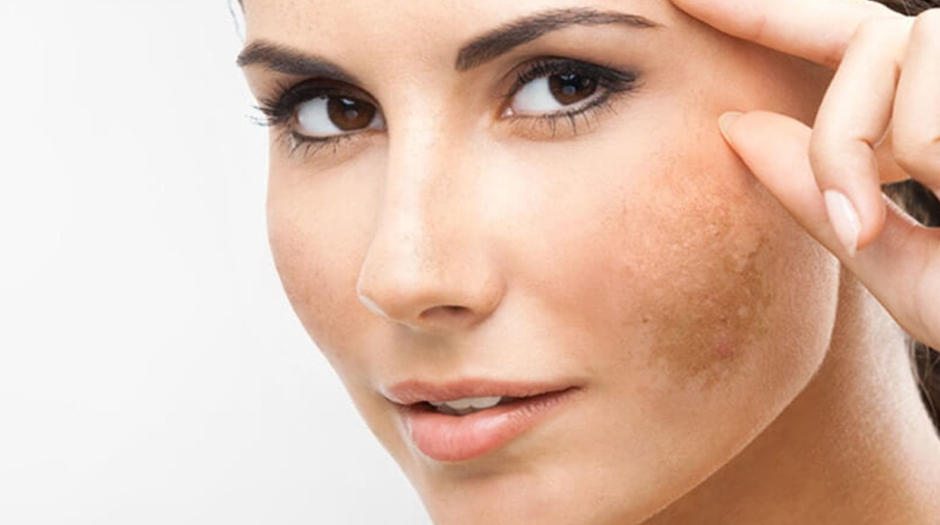Freckles, Skin Discoloration, and Sun Exposure

Freckles, Skin Discoloration, and Sun Exposure
We often look back at photos from our summer vacations and reminisce about the pleasant memories. In the same way, our skin retains the memory of summer sun exposure by keeping its tan for another 4–8 weeks. A tan that has developed properly — through gradual sun exposure, the use of sunscreen, and avoiding midday sun and sunburns — is a normal and healthy response of our skin to solar radiation. However, often some aesthetically unpleasant marks remain on our skin, which do not fade along with the tan — the so-called discolorations and freckles.
What are skin discolorations and dark spots?
We spoke with dermatologist Andreas Merkoureas, head of the modern dermatology clinic Dermatologicum. According to Dr. Mercoureas, discolorations and dark spots fall under the category of skin hyperpigmentation. Under certain conditions — such as intense sun exposure, hormonal factors, medications, inflammation, etc. — the skin may produce and deposit excess pigment (melanin) into the skin cells. These concentrated deposits of pigment appear as brown patches on the skin, known as discolorations. In the case of dark spots (melasma or freckles), there is usually an overstimulation of melanocytes (the pigment-producing cells of the skin) in localized areas, which are triggered by sun exposure. This is why patients with melasma often notice their spots becoming more visible during the sunny months and fading during the winter. There are also post-inflammatory hyperpigmentations, meaning brown patches that appear after inflammation or skin trauma — especially when the healing area has been exposed to strong sunlight. Lastly, we must mention pregnancy-related discolorations (known as melasma or chloasma) which occur during or after pregnancy, or following hormonal treatments (e.g., contraceptives), and are caused by hormonal activation of the melanocytes.
How Can I Treat My Skin Discoloration?
As with most skin issues, prevention plays a key role. Proper use of sunscreen, avoiding intense or prolonged sun exposure, and protecting skin injuries (such as wounds or acne breakouts) from sunlight are simple but essential rules that can effectively protect our skin from developing discoloration. But what if those aesthetically bothersome brown spots have already appeared — how can we treat them? A key pillar of treatment is the daily use of high sun protection (SPF 50). Applying sunscreen every day helps prevent further melanin production in the skin. Combined with the skin’s natural cell turnover, this can lead to gradual fading of discoloration over time. However, it may take up to 2–3 years for them to completely disappear! Some home remedies, such as peeling with lemon juice solutions, may help speed up skin renewal with fairly good results — though they should be used with caution and ideally under guidance, as they can sometimes irritate the skin or cause photosensitivity.
Modern Treatment Options for Skin Discoloration and Dark Spots
Modern aesthetic dermatology now offers comprehensive and effective solutions for the treatment of skin discoloration and dark spots. As Dr. Merkoureas explains, the first step is a clinical examination of the affected areas by a dermatologist, using a dermatoscope, to confirm that the condition is indeed a benign form of hyperpigmentation and to rule out any potential malignancy. This evaluation can also be part of the annual mole mapping, which dermatologists recommend as a preventive screening for skin cancer.
Fruit Acid Peels (Glycolic Acid, AHAs)
Mild discoloration can be fully treated with 3 to 6 sessions of fruit acid peeling (glycolic acid). Glycolic acid, the mildest form of chemical peeling, accelerates the natural exfoliation of the skin’s surface layers by removing the skin cells that contain excess pigment. At the same time, it also provides beneficial effects on other coexisting skin conditions, such as oiliness and acne. The exfoliation is gentle, so no downtime is required after each session. Only mild redness and light flaking may occur for 1–2 days. Moisturizing creams and/or makeup can be used as early as the next day. Sessions are typically scheduled every 2–3 weeks. For obvious reasons, this treatment must be performed with strict daily sun protection and is ideally carried out during the winter months (from late October to mid-May, based on the geographic latitude of our region).
TCA Peeling (Trichloroacetic Acid)
Deep and dark discolorations require more intensive treatments, with the most effective being TCA peeling (Trichloroacetic Acid). In this treatment, most layers of the skin are renewed, resulting in faster outcomes, but recovery time is required. For about 10 days after the session, intense skin peeling occurs, and the use of reparative dermocosmetic products is necessary. Due to its strong action, superficial discolorations will disappear after the first session, while deeper ones require 3–4 sessions, performed every 3 weeks. As with glycolic acid peeling, the treatment is carried out under strict daily sun protection and during the winter months (ideally from late October to mid-May, depending on geographic location).
Laser Treatment for Discoloration Removal
The most advanced method for treating discoloration and dark spots is laser therapy using a specialized device. The areas with discoloration are scanned with the laser, which vaporizes the superficial layers of the skin containing pigment (melanin). The treatment is painless, as a numbing cream is applied beforehand. During the following two weeks, with the use of reparative cream and sunscreen, the skin in the treated areas regenerates. Usually, 1–2 sessions are required for the complete removal of all discolorations. The treatment is performed with daily sun protection and is ideally done during the winter months. It is considered the fastest, most effective, and painless method for treating skin discoloration, dark spots, and pigmentation.
Visit the Dermatologicum dermatological clinic and find out about your own personalized treatment for discoloration, spots or blemishes!



